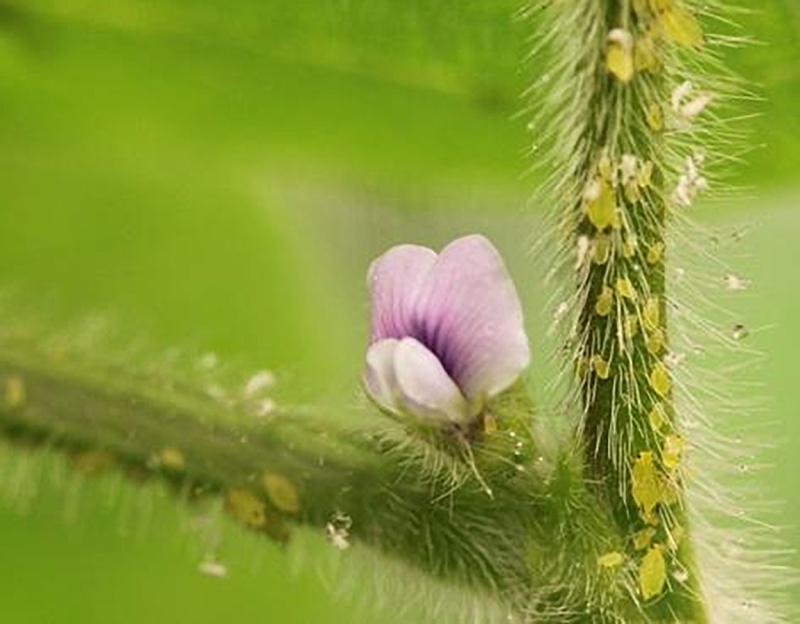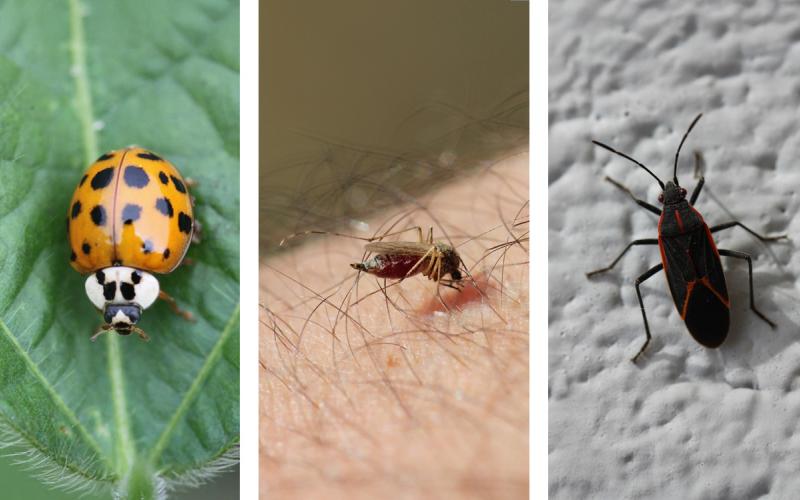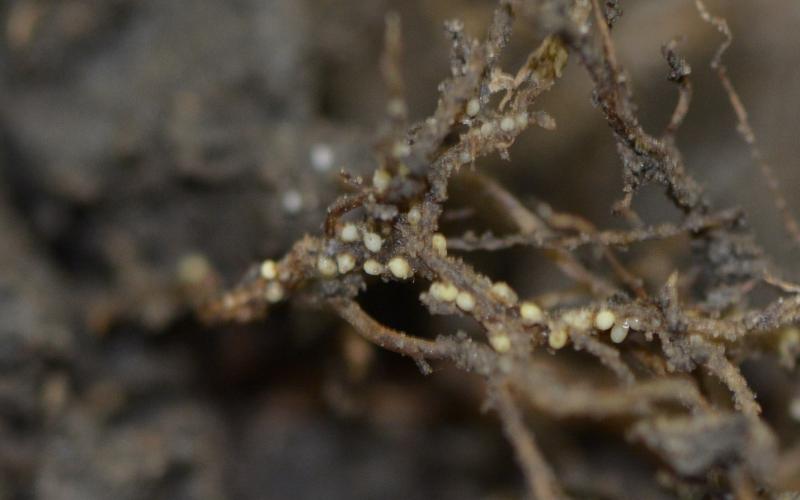
Written collaboratively by Adam Varenhorst, Philip Rozeboom, Patrick Wagner, and Brad McManus.
While scouting soybean aphids this week we noticed winged soybean aphids on many plants. On some of the plants, we also observed small colonies of 5-10 soybean aphid nymphs (Figure 1). This indicates that the soybean aphids are just starting to arrive in South Dakota soybeans, and weekly scouting for them should be occurring. These populations won’t reach the economic threshold for some time, but early scouting helps determine which fields may have problematic infestations. For scouting soybean aphids, we recommend using the speed scouting method as described below. This method allows for a more rapid decision on in field populations and is based off the economic threshold of 250 aphids per plant. We do not recommend treating fields before the threshold is reached as these treatments do not provide increased yield protection and can lead to increased soybean aphid populations due to the removal of the predatory insects that would feed on the aphids. Research has shown that these early insecticide applications can lead to a resurgence of the soybean aphid populations.
Scouting for Soybean Aphids
There are two methods that can be used to effectively scout for soybean aphids.
Traditional Scouting
The traditional scouting method is where 20 plants from multiple locations spread throughout a field are examined for soybean aphids. When soybean aphids are present, they are counted and the total number of infested plants and the number of soybean aphids per plant are recorded. Management is necessary when at least 80% of the plants are infested with 250 or more soybean aphids. The main issue with this method is that it can be time consuming.
Speed Scouting
Speed scouting is a binomial sequential sampling program that is based off the 250 aphid per plant threshold. It was designed as a method of scouting that would provide accurate management decisions while saving time. The speed scouting method uses a decision population of 40 aphids per plant. A worksheet is available for use while scouting with this method (Figure 2).

To use the speed scouting method, you first assess the soybean aphid populations on 11 random plants while walking in a “W” or “Z” pattern in the field. For each plant, if it has less than 40 soybean aphids you put a “-” on the line and if it has more than 40 you put a “+”. After 11 plants are examined, you tally up the “+”s. If there are 6 or less, you have reached a do no treat decision for the field. If there are 11, you have reached a treat decision. However, it is necessary to reevaluate the field 3-4 days later to confirm that the population is still present before an insecticide application is applied. If 7-10 “+”s were observed, additional plants must be scouted. This method reduces the number of aphids that must be counted on a plant and provides accurate management decisions.
Management
If management is needed due to reaching the threshold from traditional or speed scouting, insecticide application is recommended. Currently registered insecticides for management of soybean aphid in soybean are listed in the latest South Dakota Pest Management Guide: Soybean.
Pyrethroid resistant soybean aphid populations have been documented in several counties throughout South Dakota. For this reason, if you choose to spray a pyrethroid insecticide for soybean aphid management, closely monitor the population to ensure the insecticide was effective. We do not recommend using pyrethroid class insecticides in South Dakota for the management of soybean aphids. This applies to products with a single pyrethroid class active ingredient, a combination of pyrethroid active ingredients, or a pyrethroid combined with an active ingredient from a different insecticide class.
If you experience a pyrethroid failure, please contact Adam Varenhorst.


